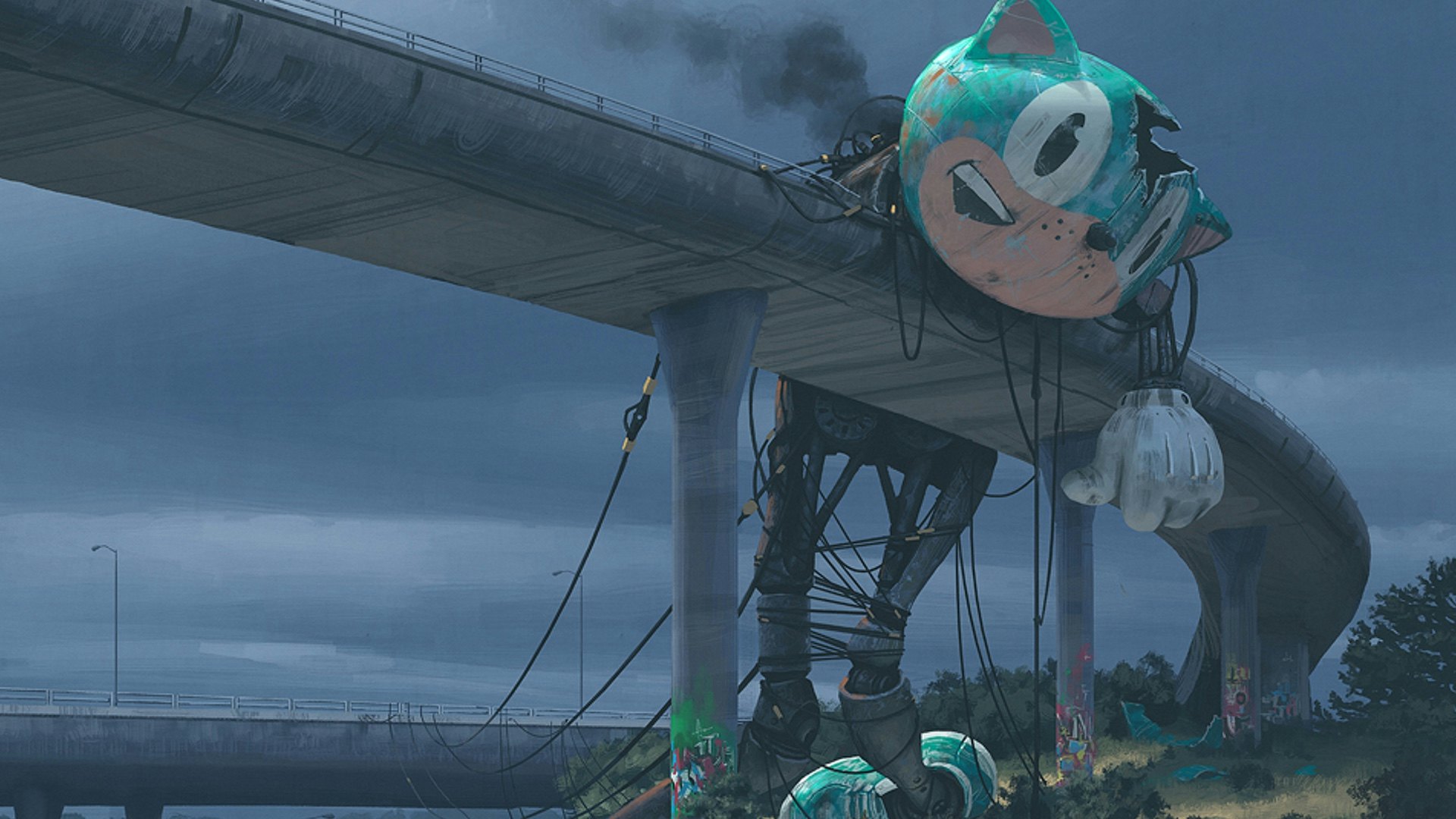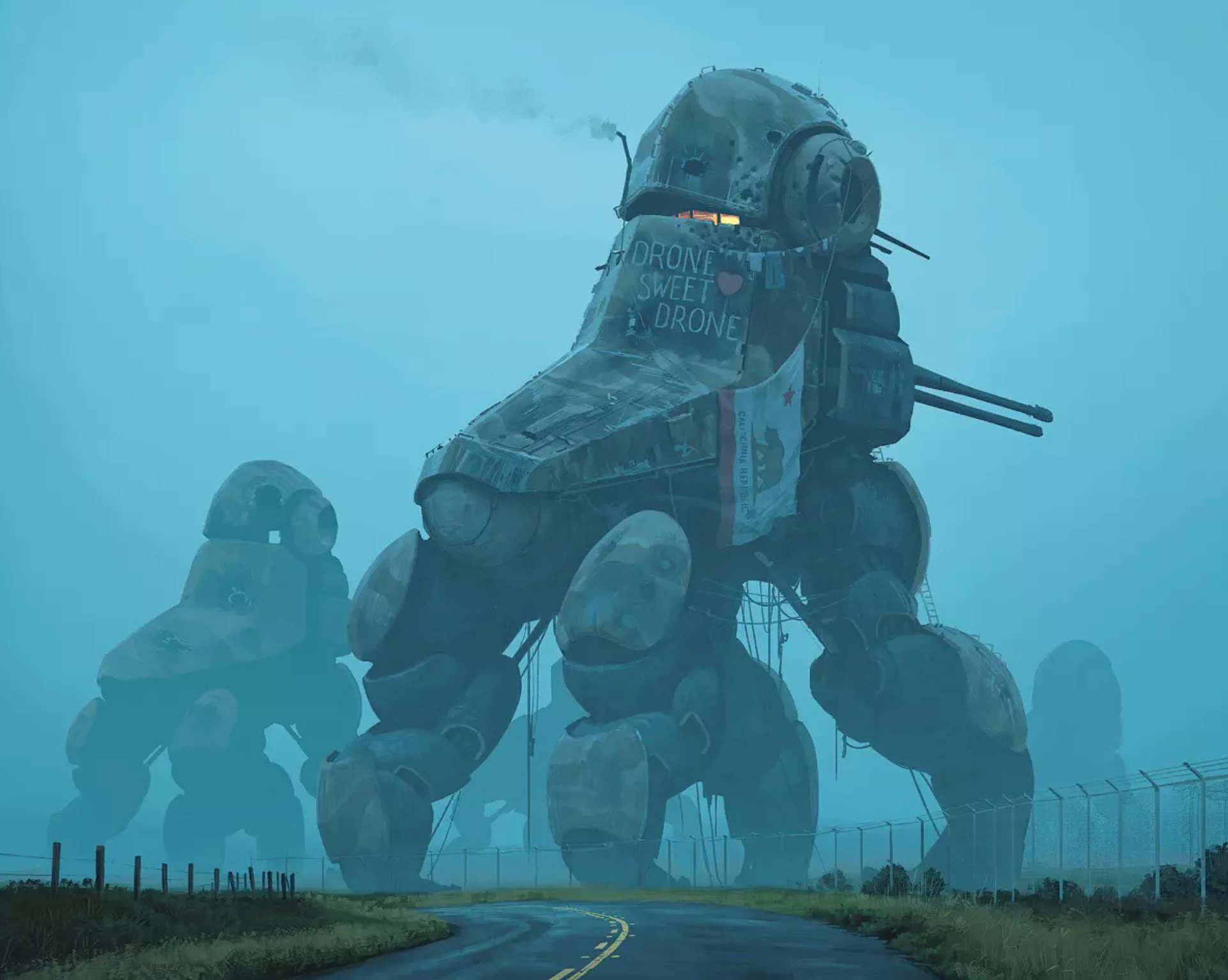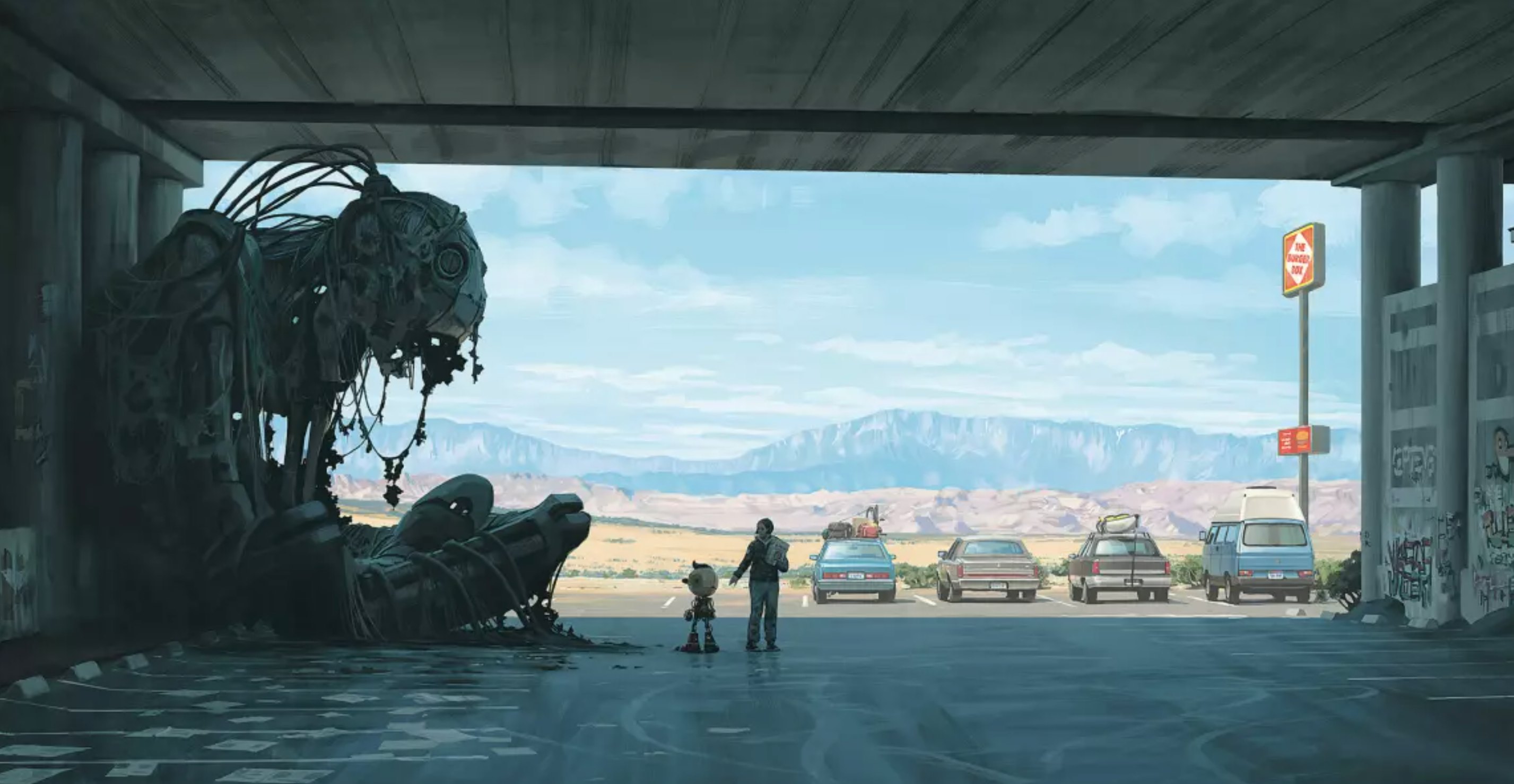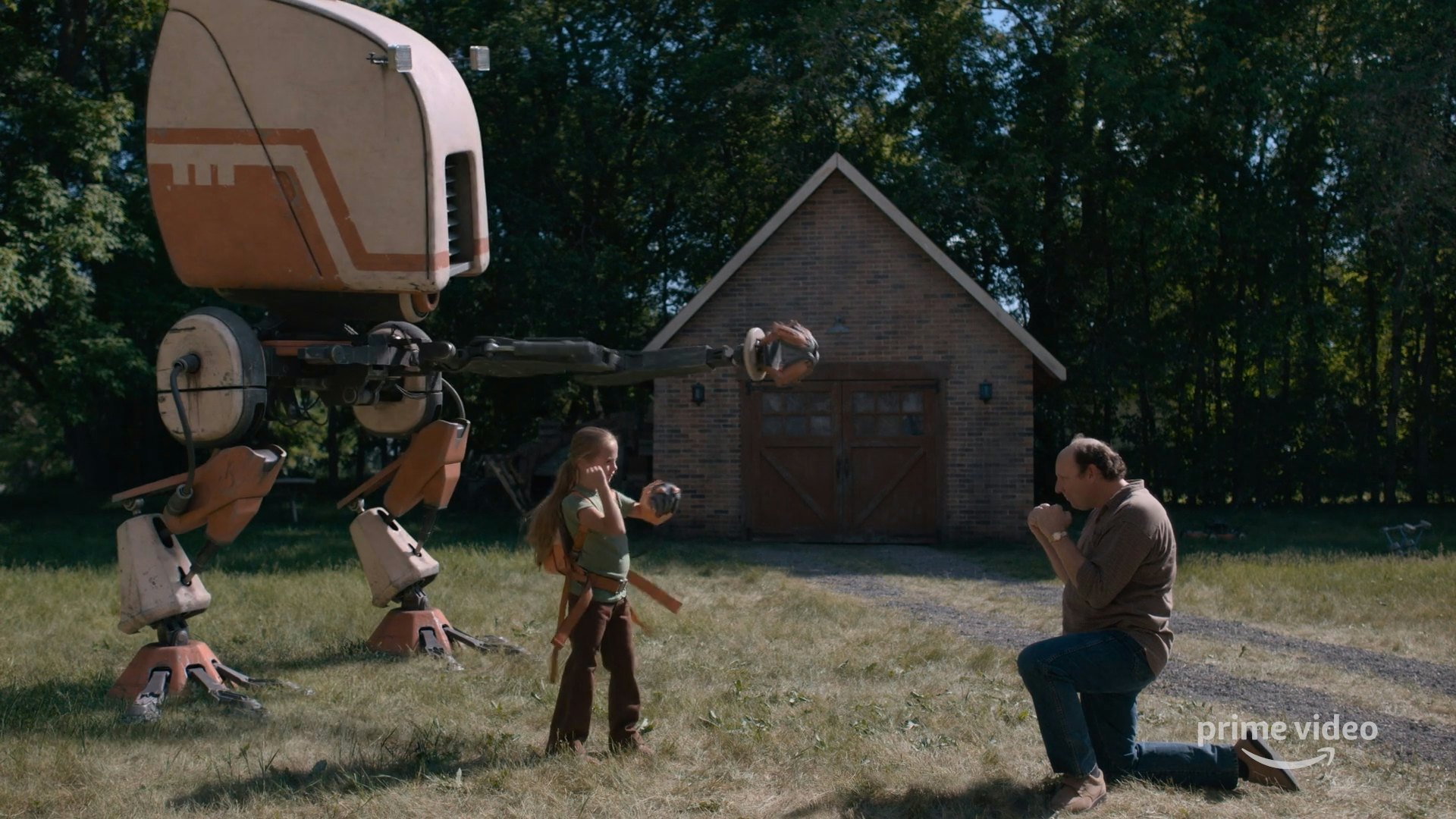
Netflix is no stranger to a book adaptation. Sometimes, they’re great, like Wes Anderson’s Roald Dahl short story collection. Other times, they fall flat, like McG’s Uglies. It usually boils down to one thing: do the people behind the camera understand why the original book was beloved in the first place? If that X factor can be reflected on the screen, then a lot of other sins can be forgiven.
Unfortunately, one of Netflix’s biggest upcoming book adaptations is signaling a big misunderstanding of what makes that book so great in the first place.
Netflix recently revealed a first look at The Electic State, a big-budget sci-fi road trip movie from the Russo Brothers starring Millie Bobby Brown and Chris Pratt. It’s based on the graphic novel by artist Simon Stålenhag that balanced gorgeously composed paintings with the story of a robotic uprising in a retro-futurist world. The paintings are sparse and hazy, with the feel of something you might encounter while urban exploring.
More images from The Electric State. c/o Skybound Entertainment




The Netflix movie doesn’t look like that at all. The first-look images show comedically awful wigs, muddy color grading, and a robotic Mr. Peanut. While there are “marketing robots” in the original book, they aren’t anything like the movie’s version. The Russo’s even convinced Planters Peanuts to give them the right to the character. How’s that for corporate synergy?
Stålenhag’s books aren’t unadaptable. In fact, another streamer managed to reflect their unique tone. Amazon Prime Video’s Tales from the Loop was also based on a Stålenhag book. In that case, replicating the original art was a clear priority. The show paired minimalist cinematography with music from iconic composer Philip Glass. Stålenhag’s paintings were even used in posters for the show.

It was a risk that mostly paid off, though some episodes bordered on boring. However, Netflix seems to be overcompensating by making a beautifully destroyed wasteland into something that looks more like Borderlands. Hopefully, the story will make up for this change in aesthetics, but if you want to see a true adaptation, you’ll have to turn to Prime Video, not Netflix.







